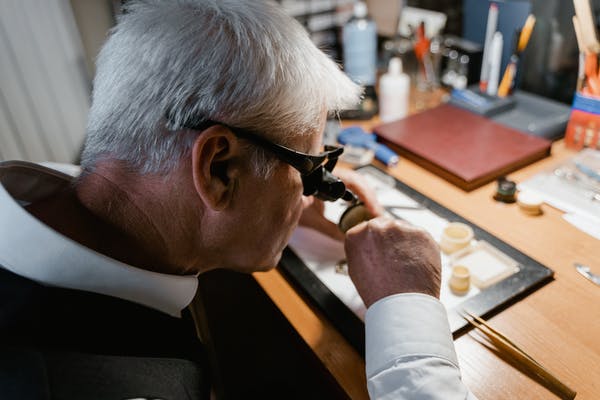Car enthusiasts, in addition to the aesthetics, value the “vital organ” that makes them work, i.e. “the engine” and you may ask yourself, what does this have to do with the movement of a high-end watch?
Simple…
It happens to be the perfect analogy to explain the importance of the type and quality of the movement for a watch because it is the mechanism that drives it and makes it work.
Movement of a High Range Watch What is it?
It is also known as the caliber and is the component or set of parts that provides the energy necessary for the watch to run.
Watch movements can come in different shapes to achieve adaptation to different types of cases, as these can be round, tonneau-type, rectangular, oval, baguette, etc.
The caliber of a watch is measured in lines or millimeters and its parts are divided into two main categories:
- Elements that make up the ébauches.
- Those belonging to the rest of the components.
Èbauche is a term of French origin used to describe the raw movement of a watch and comprises the basic components of mechanical and quartz movements.
Types of Movements.
Technically, the caliber can be classified into 3 groups, but it is necessary to point out that there are others, however, the most widely used are the following:
Manual winding mechanical movements.
Watches with this type of movement require the wearer to turn the crown every so often to wind the mainspring, thus storing the energy that runs the watch until it is wound again.
Although it seems a bit old-fashioned, hand-wound movements are still used in classic watches and in some models where originality is desired.
Self-winding mechanical movements.
The caliber or automatic movement is the most common today, it is not necessary to wind it because the mainspring is wound automatically.
They have a rotor that rotates when driven by the swinging of the watch due to the natural movements of the wearer’s wrist.
It is for this reason that if the watch is left unwound for long periods of time, manual winding is required for activation.
Quartz movements.
Quartz watches appeared in the seventies to completely revolutionize the watchmaking industry and their appearance even shook many manufactures.
In this case the watches are powered by a battery that sends electric current through one of the quartz, so that the energy runs through the crystal and produces vibrations in the body of the watch.
Normally the watch battery should be replaced in periods ranging from 2 to 5 years, as this is usually the useful life of the batteries.
The maintenance of high-end watches with quartz movement is less complicated than that of a mechanical watch, they are also usually less expensive.
Other movements.
It is important to note that there are also hybrid movements in which the battery is charged by turning the rotor very similar to an automatic watch and there are watches that are charged by the sun’s rays.
 Caliber or Movement of a High Range Watch.
Caliber or Movement of a High Range Watch.
The term caliber used to describe watches was originally used to denote the size of the movement.
But nowadays it is used as a specific internal name of a watch movement, each manufacture employs an identification system to number its calibers.
We regularly associate the word caliber with firearms, but for those who are immersed in the world of watchmaking it is also a very common word.
Its use comes from the 17th century, thanks to Henry Sully, an English watchmaker, who named his watch circa 1715, in order to identify the arrangement and dimension of the pillars of the movement, the wheels and so on.
The Charm of Mechanical Watches.
For some it is more practical to use watches with quartz movement, but the mechanical watch has a great charm, it consists of numerous parts that must work together and harmoniously.
These pieces are:
- The mainspring is a metal coil that can store energy when wound.
- The gear train is the part of the motion that receives the energy from the main chain and then pushes it through a series of gears that decrease in size.
- The escapement of a watch is a circular shaped element with a tooth that receives the energy coming from the gear train, these teeth trap the energy and direct it to the balance wheel.
- The flywheel is the part that rotates back and forth in a pendulum motion.
In the movements of a high-end manual-winding watch, the mainspring is energized when the wearer winds the crown; in automatic watches, the energy is provided by the natural movement of the wrist.
Difference between the Movement of a High Range Quartz and Mechanical Watch.
The quartz allowed to provide watches with precision and a little more resistance to external factors such as gravity and temperature, another differentiating aspect is that they are more economical.
Mechanical watches require metals such as steel, titanium or others in specific parts in order to function and this increases their value.
However, the mechanical movement in a watch causes admiration because its manufacture is practically a work of art due to the complexity of its manufacture, which normally derives from a work of craftsmanship and great tradition.
 Now that you know all about high-end watch movements, which one to choose?
Now that you know all about high-end watch movements, which one to choose?
The decision is often subject to how much you are willing to pay for a high-end watch, those with mechanical movements are usually above 1000 Euros the simplest, but depending on the brand, model and exclusivity can reach exorbitant amounts.
If you need some advice on this subject, do not hesitate to contact Adeler Jewelers, we have the right professionals to help you.

 Caliber or Movement of a High Range Watch.
Caliber or Movement of a High Range Watch. Now that you know all about high-end watch movements, which one to choose?
Now that you know all about high-end watch movements, which one to choose?